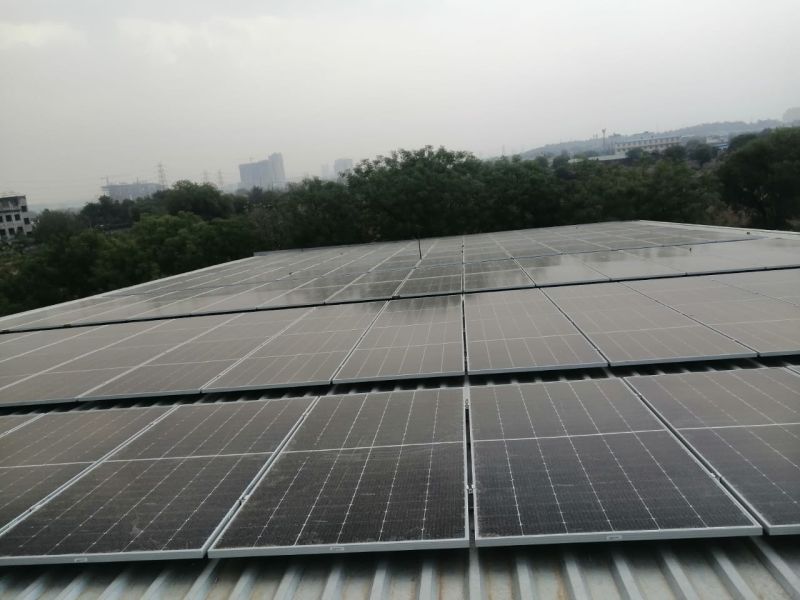
Plans a foot for 15 GW rooftop solar capacity in govt, commercial and industrial buildings – EQ
In Short : Plans are underway for the development of 15 GW of rooftop solar capacity on government, commercial, and industrial buildings. This initiative aligns with the broader goal of expanding renewable energy infrastructure in India and increasing the adoption of solar power. Rooftop solar installations on these types of buildings can contribute significantly to the country’s clean energy objectives, reduce carbon emissions, and promote sustainability in the power sector.
In Detail : The government will soon start a pan-India survey to assess the final potential of solar panel installations in both state and central government buildings.
Following the big-bang announcement by Prime Minister Narendra Modi that India aims to install 30 gigawatt (GW) of rooftop solar (RTS) capacity in the residential sector, the government is eyeing another 15 GW to be set up in government buildings and the commercial and industrial (C&I) space by 2024-25, senior officials in the Ministry of New and Renewable Energy (MNRE).
Eight Central Public Sector Undertakings (CPSUs) in the power sector, which were earlier asked to participate in the residential rooftop solar scheme, will now be asked to take up RTS installations for government buildings as well.
“CPSUs will work with government departments, both Government of India (GOI) and the states, for the saturation of buildings with RTS. They would adopt the RESCO model also for government buildings,” said a senior MNRE official.
Renewable Energy Service Company (RESCO) is a solar financing model in which a third-party service provider (RESCO) owns, installs, operates, and maintains the RTS system on behalf of the customer. The RESCO model is often structured as a long-term agreement, typically ranging from 10 to 25 years.
The government will soon start a pan-India survey to assess the final potential of solar panel installations in both state and central government buildings.
“The assessment is being done because the installation depends not just on the roof area, but also other on-site technical factors,” a second MNRE official said.
Model solar village
The MNRE has also given CPSUs the option to aggregate demand from the residential sector and create model solar villages, as envisioned in the programme. “They (CPSUs) may deploy rooftop solar in the residential sector to aggregate demand, and would be encouraged to get into the rooftop market as trusted vendors,” the official said.
The government aims to set up a model solar village in each district that will act as a role model for the adoption of RTS in rural areas.
“Urban local bodies (ULBs) and panchayati raj institutions can also benefit from incentives for promoting RTS installations in their areas. The scheme has a component for the payment security of RESCO-based models, as well as a fund for innovative RTS projects,” the ministry said.
Big picture
Residential, government, and C&I put together, the government is targeting setting up 45 GW of RTS capacity in three years under the revised regime.
An August 2023 report by JMK Research and the Institute for Energy Economics and Financial Analysis (IEEFA) stated that industry estimates peg FY2023-24 solar rooftop installation capacity at 4 GW, the largest to date.
The rooftop solar potential of micro, small, and medium enterprises (MSMEs) — currently pegged at around 15GW — remains largely untapped.
The residential rooftop scheme provides a central financial assistance (CFA) of up to 60 percent of the system cost, capped at Rs 78,000 per project. At current prices, this will mean Rs 30,000 of subsidy for a 1 kW system, Rs 60,000 for 2 kW systems, and Rs 78,000 for 3 kW systems or higher. Households can apply for the subsidy through a portal, and will be able to select a suitable vendor for installation.
Overall, India aims to add 500 GW of non-fossil power generation capacity by 2030, of which 485 GW will be purely from renewable sources. Of the 485 GW, the government has estimated setting up solar projects of 300 GW, while 100 GW is planned under wind energy, and the rest from bioenergy and hydropower.













